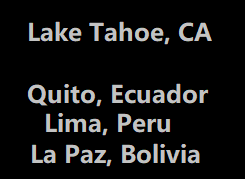KORDILLERA Bottom Line:
We recommend Scarpa Phantom 6000 or Phantom Tech HD Boots and Vasak or Starken crampons which will allow you to grip the mountain on steep and icy slopes.
Read-on if you want to learn more…
Differences in Mountaineering Boots for 8000m Peaks vs. 6000m Volcanoes
When preparing for high-altitude climbs, mountaineers need specialized footwear suited for the conditions they’ll encounter. Mountaineering boots for 8000-meter peaks (the “Death Zone”) differ significantly from those designed for lower, yet still challenging, 6000-meter volcano climbs. Here’s an overview of the key differences:
1. Insulation and Warmth
8000m Peaks: In the extreme cold of peaks like K2, Everest, or Makalu, climbers require boots with advanced insulation. These boots often feature a double-layer system, including an inner boot (usually made of thick, synthetic materials or down) and an outer shell that provides additional warmth and wind protection. Insulation is crucial for preventing frostbite in temperatures as low as -40°C.
6000m Volcanoes: While still cold, the conditions at 6000-meter volcanoes (like Mt. Cotopaxi or Chimborazo) are typically less harsh. Here, boots with moderate insulation, such as single-layer constructions with lightweight synthetic liners, are often sufficient. These boots keep climbers comfortable without overheating, as the temperatures at these altitudes are less extreme.
2. Weight and Flexibility
8000m Peaks: Boots for higher altitudes tend to be heavier and bulkier to provide the necessary warmth and protection. However, they are designed to provide stiffness for stability on technical terrain, including ice and mixed rock climbing. They are typically more rigid, supporting crampon attachment and precision footing.
6000m Volcanoes: For volcano climbs, boots are generally lighter and more flexible. Climbers may encounter less technical terrain and more snow and scree, so boots need to balance warmth with mobility. These boots allow more freedom of movement and are better suited for long approaches or walking on volcanic ash and snow.
3. Crampon Compatibility
8000m Peaks: Boots for extreme altitudes are built to support automatic crampons (with a front and rear bail system), which are essential for icy and rocky terrain at these altitudes. The boots’ rigid sole ensures a secure and stable fit with crampons, vital for safety.
6000m Volcanoes: While these boots are still compatible with crampons, they may only support semi-automatic or strap-on versions. The terrain on volcanoes typically requires less extreme crampon engagement, as climbs are often less technical.
4. Breathability and Ventilation
8000m Peaks: At higher altitudes, reducing the risk of frostbite and hypothermia is more critical than breathability, so boots designed for 8000m climbs sacrifice ventilation for insulation. Waterproof and windproof features are often prioritized.
6000m Volcanoes: Given the less severe conditions, breathability and moisture management are more important. Boots for these climbs may incorporate breathable fabrics and a focus on moisture-wicking liners, preventing sweat build-up on warmer, less extreme climbs.
5. Durability
8000m Peaks: Boots for these climbs are built for extreme durability to withstand harsh conditions like ice, rock, and high winds. They feature reinforced toe caps and strong outer materials like synthetic leather or advanced polymers.
6000m Volcanoes: While still durable, boots for these climbs may not require the same level of reinforcement. The terrain can be tough, but not as abrasive as what’s found on 8000m peaks.
Conclusion for Boots
Choosing between boots for an 8000m peak or a 6000m volcano depends on the specific needs of the climb. While both require sturdy, reliable footwear, the higher-altitude boots prioritize warmth and rigidity, while the lower-altitude boots emphasize flexibility, breathability, and lighter weight for less extreme environments. Understanding these differences is key to ensuring safety and comfort during the ascent.
Crampons are an essential piece of mountaineering gear, especially for tackling icy or snow-covered terrain, but the type of crampons you use can vary greatly depending on the altitude and conditions of the climb. Here’s how crampons differ for 8000m peaks versus 6000m volcanoes:
Crampons for 8000m Peaks
- Type:
- Automatic Crampons: These are the standard for climbs on 8000-meter peaks. They have a front and rear bail system that securely attaches to the boot, ensuring a rigid connection between the boot and crampon. This is important for maintaining stability on icy or technical mixed terrain.
- Crampon Design: The front points of these crampons are often longer and more aggressive to allow for precise placement in steep ice. They are designed for harsh conditions, where solid footing is crucial at extreme altitudes.
- Material:
- Crampons for high-altitude climbs are typically made from high-strength materials like stainless steel or aluminum, which can withstand extreme temperatures and stresses. Steel is often preferred because it maintains its rigidity and sharpness even in freezing conditions.
- Durability and Performance:
- These crampons are built to perform in extreme conditions. They are designed to be highly durable, with robust points that can penetrate hard ice and rock. Some even feature anti-balling plates to prevent snow from building up underneath the crampon.
- Use Case:
- Climbers on 8000m peaks will often encounter steep, technical terrain, requiring the ability to trust their crampons for stability. The altitude, extreme cold, and technical nature of these climbs demand a highly reliable and secure crampon system.
Crampons for 6000m Volcanoes
- Type:
- Semi-automatic Crampons: These crampons typically feature a hybrid system, where the front part of the crampon attaches to the boot with a clip, while the rear is secured with a strap. This system provides a solid fit but offers a bit more flexibility than the automatic crampons used on 8000m peaks.
- Crampon Design: The front points of these crampons are generally shorter and less aggressive, as the terrain on 6000m volcanoes often doesn’t require such precision. These crampons are well-suited for walking on less steep snow or mixed terrain but may not be as effective on vertical ice.
- Material:
- Crampons for volcano climbs may be made of a combination of steel and aluminum. Aluminum can be a good choice here because it’s lighter than steel, which is useful for long approaches on snowfields. Steel versions are still common, especially for durability on volcanic terrain.
- Durability and Performance:
- While still durable, these crampons are not as heavy-duty as those for 8000m peaks. They are designed for more straightforward snow and ice climbing, but they may lack the features that are critical on technical, icy terrain at high altitudes, such as anti-balling plates.
- Use Case:
- Climbers on 6000m volcanoes usually experience less technical and less steep climbing compared to 8000m peaks. These climbs often involve more moderate snow slopes or mixed terrain, so semi-automatic crampons are often sufficient.
Key Differences:
- Fit and Security: Crampons for 8000m peaks provide a more secure and rigid fit, ensuring that they won’t shift or come off during steep, technical climbing. For 6000m volcanoes, crampons are typically less rigid, offering more flexibility.
- Crampon Points: On higher peaks, longer, more aggressive front points are designed to pierce steep, hard ice, whereas volcano crampons have shorter points suited for moderate snow and ice conditions.
- Material: 8000m crampons prioritize durability in harsh conditions, often using stronger materials, while volcano crampons might use lighter alloys to reduce weight for less technical climbs.
Conclusion:
When selecting crampons, it’s important to consider the technicality and conditions of the climb. For 8000m peaks, climbers require automatic, aggressive crampons that ensure stability in challenging, icy conditions. For 6000m volcanoes, semi-automatic crampons with a lighter design and less aggressive points are more than sufficient for the generally less demanding terrain.



Comments are closed